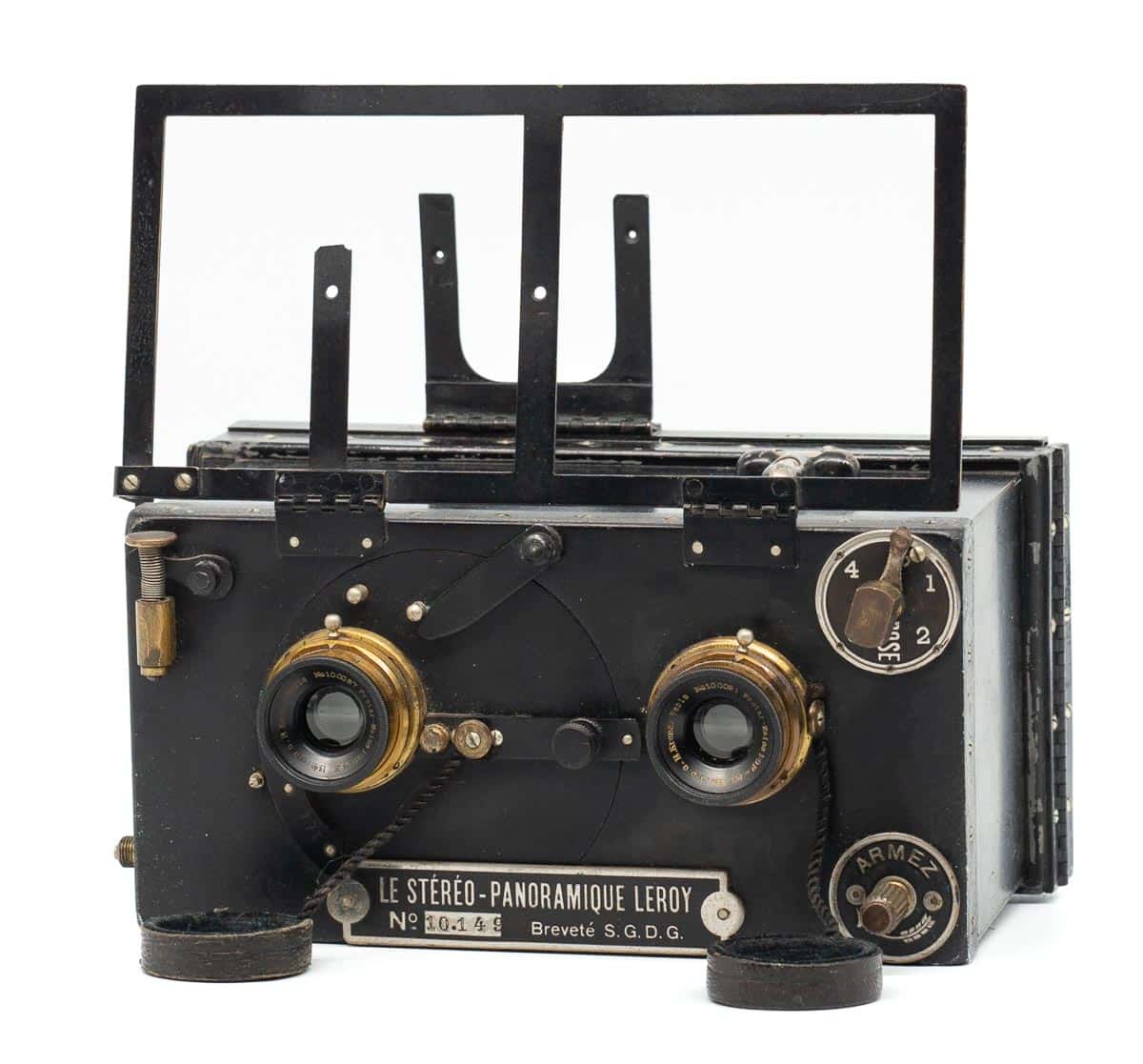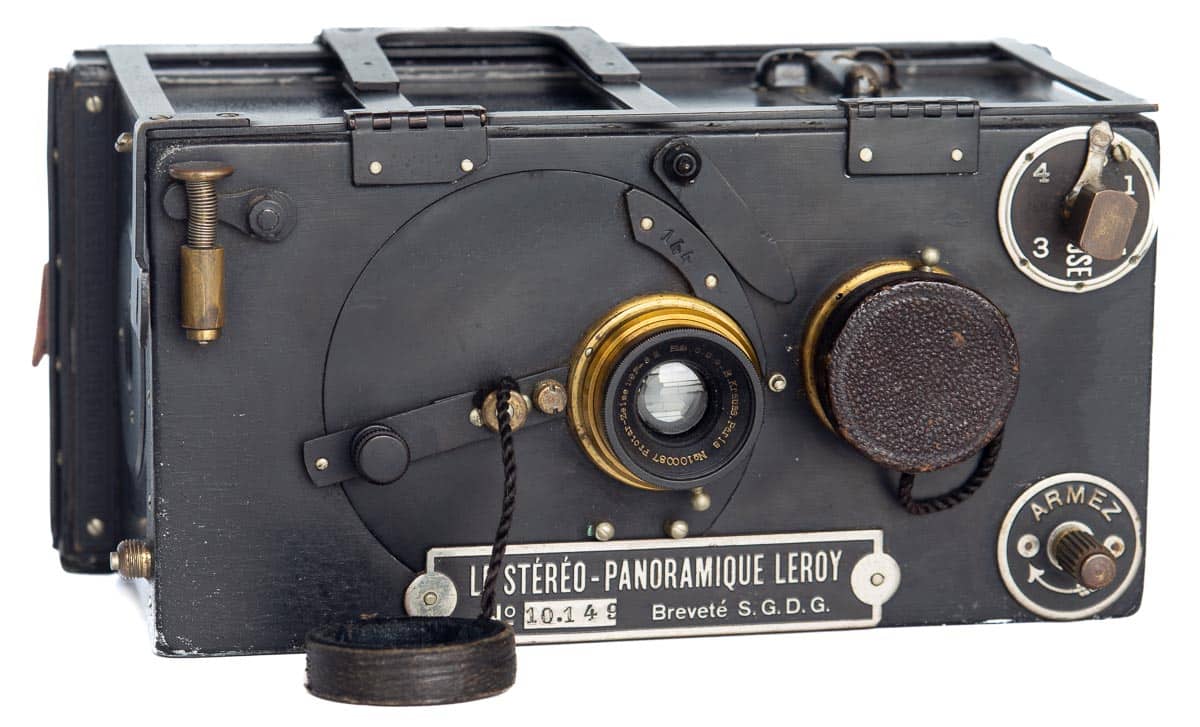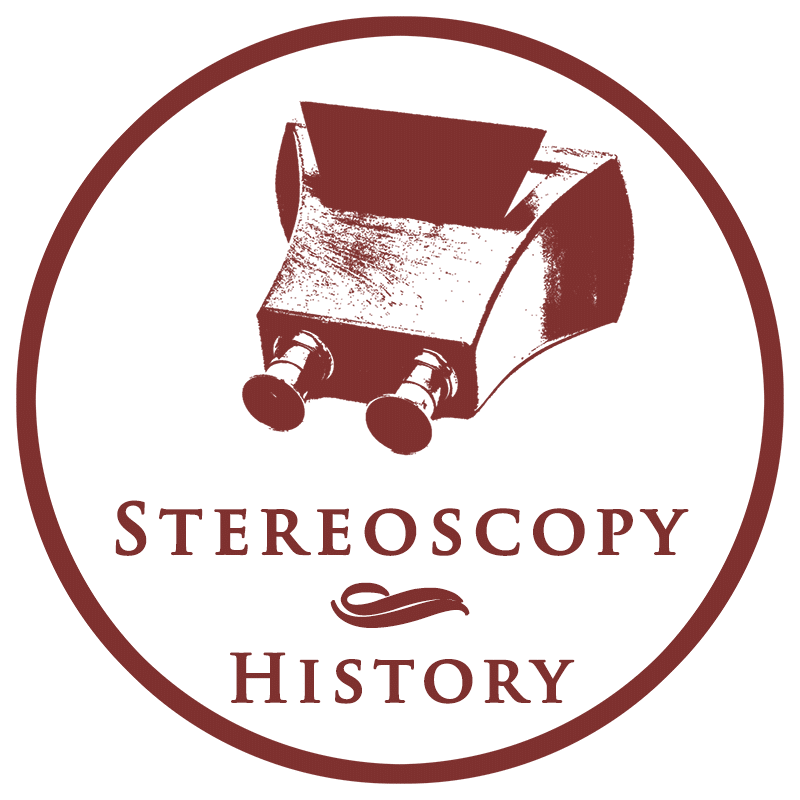
Le Stéréo-Panoramique Leroy can take both stereo photos and panoramic photos, just by switching the position of a lens. Both lenses are used in stereo position. A septum inside the camera ensures that both lenses can make their own isolated exposures. In panorama position, only one lens is used to take panorama photos. The right lens (from the photographer’s point of view) is mounted on a circular plate. The lens is positioned in the centre when it is turned clockwise. The septum inside the camera folds up. After the lens is positioned, the left lens must be covered with its lens cap.
Other manufacturers also produced cameras that could take both stereo and panoramic photos, such as Mackensteins “Francia” No. 4, but Leroy’s rotating lens mechanism is unique. Le Stéréo-Panoramique remained in production for almost 20 years, without significant changes. After Guérin’s acquisition of Leroy’s company, Le Stéréo-Panoramique Guérin appeared in 1923. This model had a third lens, which supported the making of panoramic photos.

Specifications
| Manufacturer: | Lucien Leroy, Émile Guérin |
| Year of introduction: | 1903 |
| Year of manufacture: | c. 1910 |
| Type: | Stereo and panorama camera |
| Serial number: | 10149 |
| Negative type: | Glass |
| Negative format: | 6 x 13 cm |
| Lens: | Two 82 mm Krauss Protar Zeiss |
| Serial number lens: | 100087 and 100091 |
| Lens aperture: | f/9, f/11, f/16, f/23, f/32 |
| Focus: | Fixed focus |
| Shutter: | Spring powered Leroy shutter with five shutter speeds: 1/10 sec., 1/25 sec., 1/45 sec., 1/60 sec., 1/75 sec. |
| Dimensions (L x W x H): | 15.5 x 9.5 x 8 cm (Body with lenses, viewfinder collapsed) |
| Construction: | Metal |
Patent
| Number: | FR3306931 |
| Title: | Appareil photographique donnant à volonté, soit des vues stéréoscopiques, soit des vues simples dites panoramiques. |
| Filing date: | 28-03-1903 |
| Publishing date: | 24-08-1903 |
| Applicant(s): | Lucien Leroy |

Glossary: negative / protar lens / septum
Bazin, Leroy and Guérin
Charles Dessoudeix was a watchmaker. Dessoudeix’s company was founded in 1872, and located at 47, Rue du Rocher in Paris. In 1883, he helped Albert Londe with the development of a camera shutter. A year later, they presented their first shutter, branded Londe & Dessoudeix. Dessoudeix’s company was continued by Charles Bazin in 1891. Bazin partnered with Lucien Leroy, and together they introduced Le Stéréocycle, an innovative stereo camera that became very successful. Bazin left the company in 1899, and Leroy succeeded him. For more than 20 years, Leroy’s main focus was the manufacturing of the Stéréocycle and Stéréo-Panoramique stereo camera. Leroy partnered with Émile Guérin in 1916. Guérin took over the company in 1919 or 1920 and moved to 109, Rue du Bac in Paris. Guérin introduced new products to the company’s product line. New products continued to be introduced under the name Leroy. This was proof of Leroy’s strong reputation in France.
The complete story of Bazin, Leroy and Guérin
References
- Leroy, L. (1903) Appareil photographique donnant à volonté, soit des vues stéréoscopiques, soit des vues simples dites panoramiques. Available at: data.inpi.fr ↩︎
